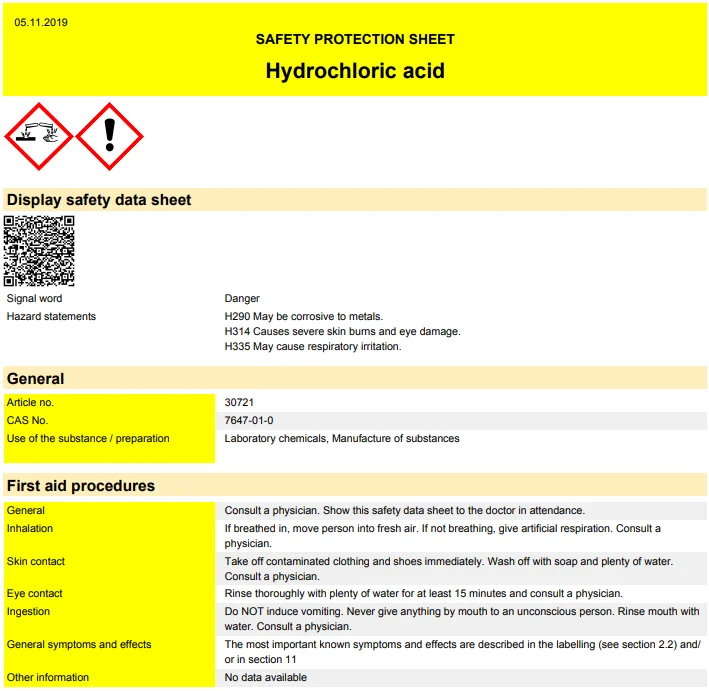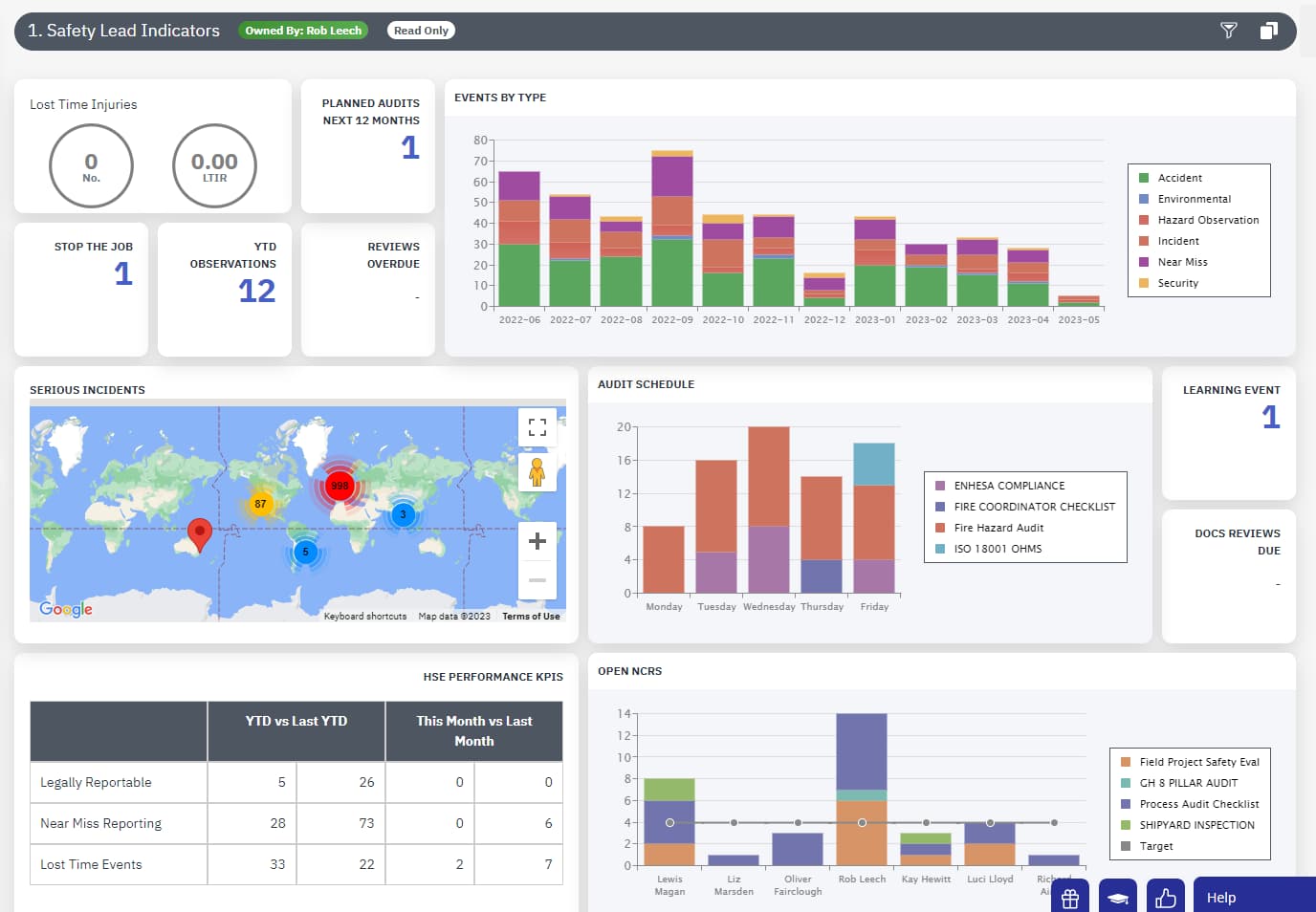
Material Safety Data Sheet Meaning & Definition
What is a Material Safety Data Sheet?
Taking proper safety measures, especially when dealing with different kinds of materials, is very important for employees. If employees are not aware about the health effects of exposure to a specific material, there is a serious risk of injury or illness.
A material safety data sheet (MSDS, or simply safety data sheet) is a document that includes technical details, including extensive information about a product, highlighting important things, such as:
- An assessment of the hazards associated with handling, storage, and using the product
- Any emergency procedures in case the product causes injury or illness
- Health effects in case of exposure
- Any measures that must be taken by employees or handlers to mitigate exposure.
The material safety data sheet can either be written, printed, or disclosed in person, and should include all the necessary information to ensure that all hazards are listed on it.
The Importance of a Material Safety Data Sheet
The material safety data sheet is of paramount importance in work environments for several reasons. It is essentially the starting point for establishing a robust safety and health and safety program for employees in the workplace. Manufacturers are required to submit a material safety data sheet with every chemical-based product too.
The material safety data sheet provides handlers, employees, and other stakeholders with relevant information about the materials and what they can be exposed to. It helps them identify the risks and ensures that they take appropriate safety measures.
It is also an important part of an employee’s right-to-know, so filling out the material data sheet accurately is necessary. There is a duty on the part of the employer to ensure that they fill out the sheet properly.
And, for companies that wish to sell their products within the European Union, they must also label the materials properly. The material safety data sheet is generally divided into different sections, often going up to 16 sections. Some of the different sections include:
- Information about the production, including the name of the manufacturer and their contact details, the product name, and any emergency phone numbers
- Information about any hazardous materials within, as well as detailed information for identifying such materials.
- Data related to fire or explosion hazards, if any.
- Physical information, including the flash point, the boiling point, and the melting point.
- Any toxic properties, including the health effects that they may cause
- Recommendations, including preventive measures and precautions that must be taken to ensure the safe storage and use of materials. This includes information about how to handle spills, disposal of the product, and the recommended packaging.
- Information about first aid and managing control, including any emergency procedures that must be conducted. Information about symptoms due to excessive exposure are also listed in this section.
- One of the sections must also include information about the name of person(s) responsible for preparing the product, and the date on which it was prepared.

Responsibilities Associated with the Material Safety Data Sheet
There are several responsibilities associated with the material safety data sheet along the supply chain. They are as follows.
Suppliers
Suppliers have several important responsibilities associated with the material safety data sheet. The most important is to prepare the sheet itself, or obtain one, before the goods can be sold. They must ensure that the MSDS is prepared as per the requirements, and is available in different official languages depending upon the material’s origin and destination.
They are also responsible for making sure that the purchaser receives a copy of the MSDS, and more importantly, to ensure that any information which is otherwise considered confidential, which would usually not be available to medical professionals or physicians in case they need to treat a patient.
Employers
Employers are responsible for making sure that the updated material safety data sheet is received for the products when a shipment arrives. They must also assess the MSDS to ensure that the date of production is accurate.
Employers also have a responsibility to maintain an accurate and updated MSDS, and must assess and update the MSDS after every few years. Moreover, employers must also prepare and share copies of the MSDS with the workers and any regulatory bodies.
The employers are also responsible for making sure that the employee who will closely work with the product have gone through the content on the MSDS and understand the contents, and the purpose of the MSDS. In case it’s needed, they must also provide any confidential information to doctors to ensure proper treatment.
Employees
The duty of employees is to mainly follow the training provided by the employers. They must also adhere to the safety regulations and guidelines specified on the MSDS, and must also know where the sheets are located. Ideally, they should be able to go through the sheet and locate any information, if needed.
Use EcoOnline’s Chemical Safety Software to Manage MSDSs
Companies can use EcoOnline’s Chemical Safety Software, which sources Safety Data Sheets directly from manufacturers and also conducts COSHH risk assessments. It is an excellent cloud-based solution that allows organizations to improve risk analysis and ensure best practice in chemical compliance.
Improve Your Colleagues Safety In The Workplace
Our FREE Ultimate Guide to Safety Data Sheet Management will help you and your colleagues stay safe and secure on the job.





